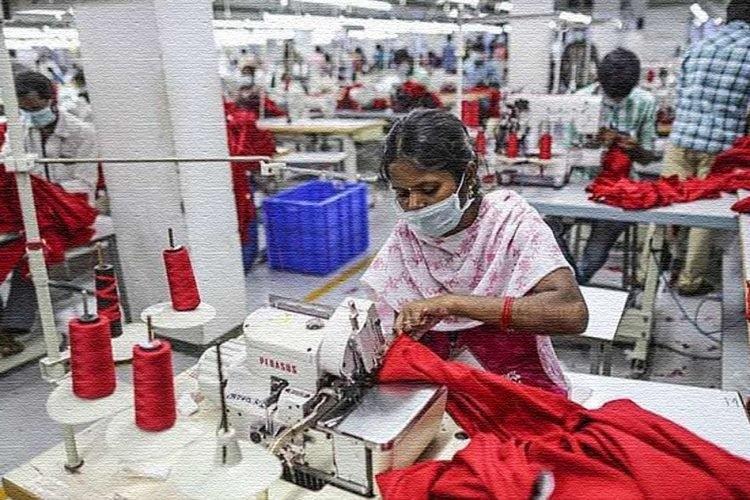The Art of Converting Workers ‘Rights’ Into ‘Benefits’

In the run up to the return of the Narendra Modi government to power in the 2019 general elections, employment and joblessness have once again become a central subject of debate. The government seems to have decided to try to respond to this debate by instituting, and heavily publicising, a pension scheme for unorganised sector workers (the Pradhan Mantri Shram Yogi Mandhan Pension Yojana), even as it moves to "consolidate" (and dilute) the country’s labour laws. After the elections, plans have also been announced to extend the pension scheme to small traders and shopkeepers.
But, if there is one thing that this discussion appears to demonstrate, it is how, yet again, so much of the country’s decision-making and policy discourse around labour issues appears to be based in a kind of fantasy world. In this fantasy, labour laws in India are ‘rigid and strictly enforced’, affecting employment; loosening restrictions will enhance employment; and welfare schemes will take care of the destitution and poverty that plague the majority of the working population. In short, workers primarily need "benefits" rather than "rights."
This view is so far out of touch with reality that one is tempted to say that the word "fantasy" itself is too weak. Over the preceding two years, in 2017 and 2018, our team in the Social Research Collective undertook two studies, on men and women, respectively, who migrate for casual and daily wage purposes. Our study looked at workers in three states -- Tamil Nadu, Uttarakhand and Delhi -- and based our findings on field surveys and interviews with these workers in their homes in slums. What we found does not match with any of the policy assumptions listed above. In particular, we found the following stark realities.
In the first place, for these workers and for most casual, contract and daily wage workers -- that is, the majority of the Indian workforce- - labour law enforcement was completely non-existent. This is not only because these workers were migrants, though that certainly played a role (as one official told us in Uttarakhand, "Why should we take care of these people? Let them go ask their own state governments for help"). The reality is that Indian labour law has three central ingredients that make it irrelevant to the vast majority of workers.
First, almost every labour law includes a numerical limit when it comes to the workplaces it applies to; for instance, the Contract Labour (Regulation and Abolition) Act, 1971, applies only to workplaces employing more than 20 workers at a time, and the Building and Other Construction Workers Act of 1996 only applies to workplaces with more than 10 workers. This automatically excludes the majority of workplaces and excludes some types of workers entirely -- such as domestic workers, daily wage plumbers or electricians, small casual painters, and so on.
Second, all labour laws in India contain clauses restricting who can file complaints for violation of the law. For instance, complaints under the Minimum Wages Act, the Payment of Wages Act or the Contract Labour Act can only be filed by the labour inspector. The most 'liberal' clause of this kind is in the Building Workers Act, which is generous enough to allow complaints to be filed by registered construction worker unions as well. But under no labour law can a worker file a criminal case when her own rights are violated. This single provision is enough to render the entire architecture of labour law almost irrelevant -- for the simple reason that those whose rights are violated can never resort to the protection of those laws in the first place.
Third, and finally, the result of both the above factors is that workers face a near insurmountable burden of proof if they wish to avail of their rights. This happens even where the law says otherwise, such as in the Contract Labour Act, where the responsibility of maintaining records lies with the employer and the contractor. In fact, whatever the law may say, in order to get any action taken, workers have to first prove that their workplace fell within the numerical limits of the law in question (a difficult task in all but the minority of large formal establishments); then convince the labour inspector (or union officer, for construction workers) that their rights were violated, for which the official will invariably demand documentary proof; and then, if they succeed in achieving all of this, prevail in whatever proceeding (criminal or otherwise) that follows.
Since both workers and labour officials are aware of these facts, neither attempts any real action. Whatever labour law may say, for the vast majority of workers, the labour department is rarely where they go in the case of a dispute. In fact, the majority of workers approach the police, who "informally" deal with the matter, often by taking bribes from both sides and most often failing to provide any justice to workers. As one worker told us, referring to the common practice of underpaying or simply not paying daily wage workers, "I do not want the government to provide me with cycles and money. I would rather they ensured I get paid for my work. If poor people don't even get paid, how will poverty end?" In such a situation, further "reforming" labour law essentially means reducing the small minority of organised, permanent workers, who at least had some protection for their rights, to the level of the casual and contract workforce.
This leaves the question of welfare schemes, which, given the state of labour laws, are often the only state intervention which has any chance of reaching the majority of workers. But these, too, are plagued with problems. While welfare schemes appear simple on paper, accessing entitlements and benefits is often a nightmarish process. Registration under the scheme is the first requirement, and this is often a process where one or multiple forms of proof is demanded, and even when that proof is supplied, the registration is simply never done. For instance, none of the migrant construction workers we interviewed in Tamil Nadu had been registered as such with the Construction Workers' Welfare Board. Many of those we interviewed in Delhi and Uttarakhand had waited months or years and only been registered after pressure by unions.
Once registered, accessing actual entitlements requires filing an application. In all three states, for construction workers, the rules do not specify a time limit for processing the application; as a result of which officials may simply sit on applications for months or, in more than 60 documented cases in Uttarakhand, for years at a time. Applications under Right to Information receive the reply that these are under process and since no time limit has been specified, it cannot be said how long the process will take. When additional pressure is put, a technical objection may be raised for "rejecting" the application, but the worker is frequently not told of the rejection. When they finally find out, the entire process has to begin again, and by then, the time limit for a particular benefit (for instance, compensation to the family of a worker who has passed away) has often passed.
It's pertinent to note that pensions for workers over the age of 60 are an entitlement under construction worker welfare schemes in all three states. Viewed from the perspective of the experience of workers, the Pension Yojana has many serious flaws. For instance, how is a worker supposed to establish that she earns less than Rs 15,000 a month? If the proof is a certificate from a government official, that process will be riddled with delays and corruption. Once certified, a worker is expected to make monthly payments, and if they miss even one such payment (given the experience of other schemes), we can expect the pension to be denied.
Finally, though pension starts from the age of 60, only those between the ages of 18 and 40 are permitted to enroll in the scheme. This means that, at a minimum, a worker will have to wait 20 years to receive the promised Rs 3,000 a month -- and that too if he or she manages to pay every month in the intervening 240 months.
As such, this scheme, and others like it, appears far more of a sham and an eyewash, intended to make the government's intended attack on the rights of permanent workers more palatable, and nothing more.
The writer is part of a social research collective, which studies unorganised, understudied and new forms of production, labour and social action.
Get the latest reports & analysis with people's perspective on Protests, movements & deep analytical videos, discussions of the current affairs in your Telegram app. Subscribe to NewsClick's Telegram channel & get Real-Time updates on stories, as they get published on our website.
























